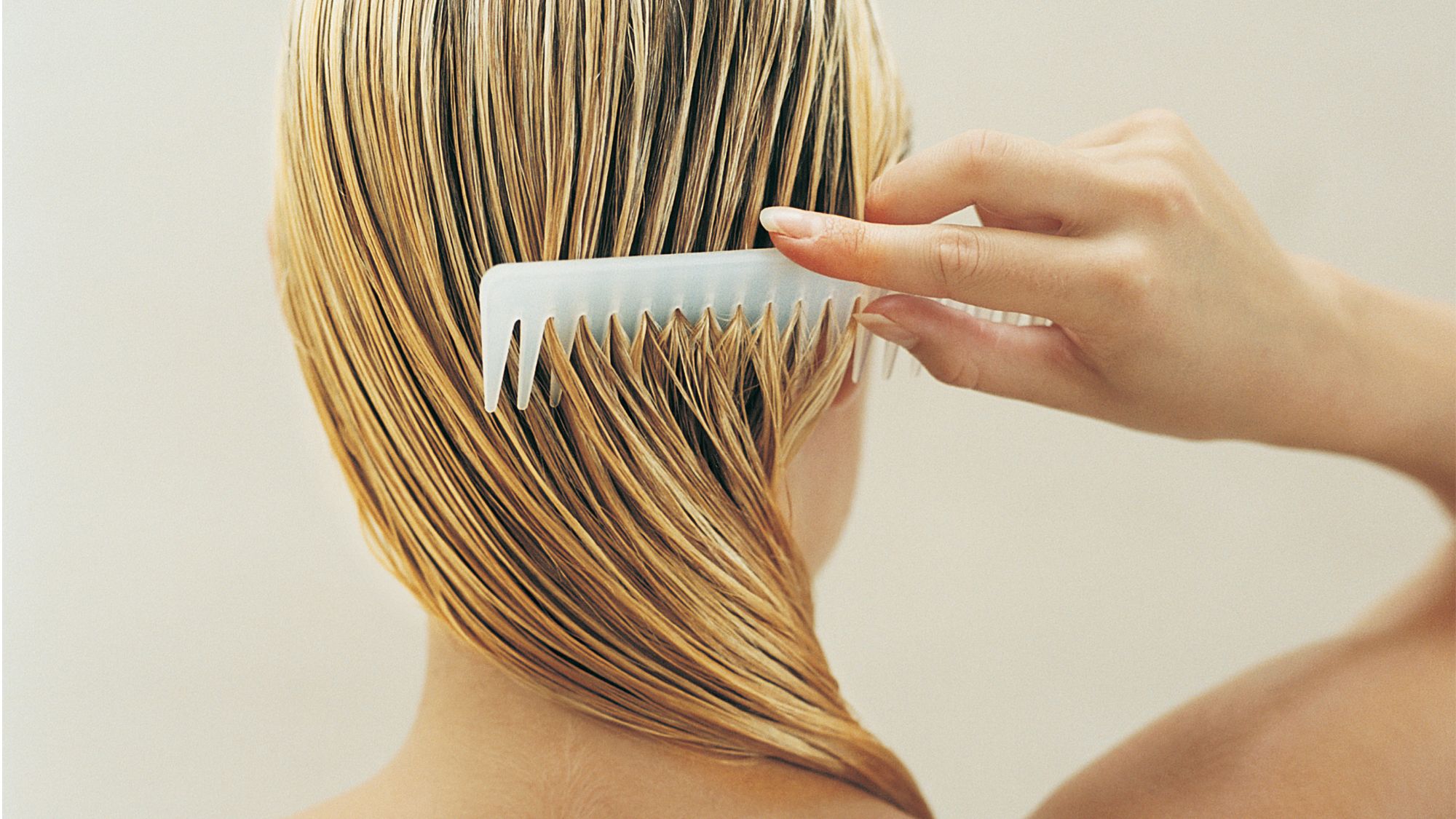Yes, there is a way to get hair dye off your skin—you're welcome
It's not as tricky as you'd think

The biggest tell-tale that you’ve (most likely haphazardly) dyed your own hair at home in a bid to keep on top of hair trends? Hair dye stains across your forehead, ears and maybe even neck are probably giving the game away.
We’ll always advocate you go to a professional to get big hair changes and flawless finishes (anyone else loving caramel hair at the moment?) but, we get it—sometimes box dye wins. It gets the job done quickly and easily, especially if covering greys is top of the agenda. However, one of the downsides of doing this is the dreaded stains. Fear not though. If you’re struggling with getting hair dye off your skin, we’ve called in John Alfred, colourist at Hershesons to tell us all we need to know.
How to remove hair dye from your skin?
If you get hair dye on your skin, firstly, don’t panic, it's not going to be there forever—promise! And definitely don’t go grabbing harsh removers. The first step is to get some tissue or a wet cloth and remove any excess; if you’re lucky (and quick enough) the stain will lift right off with just a bit of water. If that doesn’t work, fear not. You can actually use the dye to remove dye.
“The easiest, best and most effective way to remove tint from your skin is with tint,” John explains. “You should add a little splash of water and emulsify the tint through your scalp and all around your forehead,” he adds. “We have this saying in hairdressing that tint removes tint better than anything else.”
"The trick is really emulsifying that colour before rinsing off, which is the best bet for taking stains out of your skin”, says John. If your stain is really bad, salons have professional stain remover, so you could run back to your colourist, apologise cheating on them for doing an at-home kit and they’ll be able to lift the leftover colour for you.
If the stain is still quite fresh, I personally find that shampoo can also sometimes get rid of dyes if you’re quick enough to get to them. Finally, some at-home dye kits like Josh Wood's contain a stain remover wipe that you can run across your hairline and ears while your hair is sat marinating.
How to prevent hair dye getting on your skin?
“Prevention is also key,” says John. “Use a barrier cream or vaseline around your forehead, ears and nape of neck before you start tinting.” This will stop the dye from taking to the skin and instead you’ll be able to easily wipe away the vaseline instead. Some at-home kits, like Josh Wood's and IGK Hair even give you barrier cream, expecting you to, quite frankly, make a mess of things.
Celebrity news, beauty, fashion advice, and fascinating features, delivered straight to your inbox!
If you’re prone to not realising you have stains until you’ve completely rinsed and shampooed your hair, this can make them harder to remove. If you're prone to this, make a point to check for stains as your final step before letting your dye sit and process. And whatever you do, please don’t dye your hair without gloves and then use your hands, that’s just asking for trouble.
Why are patch tests important?
Since hair dye can cause contact allergies, it’s important to check you’re not sensitive to them before making contact with the scalp and skin. “We should always do a patch test or an allergy alert test, which is super important for any new hair colour that you haven’t used before,” says John, noting that this is actually a legal requirement for salons in the UK. You’ll be asked to do a test 48 hours before your colour and this covers you for up to 6 months. “If you’re a continuous client, you don’t have to get a patch test every 6 months if you’re coming in regularly,” John adds.
Patch testing is extra important if you’ve had COVID-19, this is because, in some people, having coronavirus has triggered new reactions. “COVID has changed the way that some people react to certain chemicals, some people who have never had a reaction before and suddenly they’re allergic to a tint they’ve been having for 10 years,” John explains.
Happy hair dyeing!
Tori is a freelance beauty journalist and contributor for Marie Claire. She has written for various titles, including Allure, Glamour, Elle, Refinery29, Brides, and more. Currently training to be a nail tech, Tori is a total nail enthusiast and always has time to talk all things nail art. When she’s not writing about beauty and testing products, Tori can be found walking her rescue dog Pip, drinking great coffee, and eating as many croissants as humanly possible.